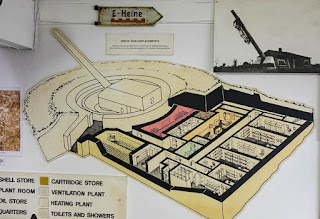We went to the Botanic Gardens and Meredith had her photo taken.
Thursday, 26 October 2017
Tuesday, 17 October 2017
Best of the Rest
The model was a Chinese teacher of Mandarin at Cobo Bay; the bike was at the port; the tower was at Pleinmont; the pools were under the tide and the last two images are from the underground hospital. The cooker has the words 'Guernsey Railway Co.' embossed on it.
Monday, 16 October 2017
Flying Home
Smoke from wildfires in Spain and Portugal had been brought north by winds from the ex-hurricane Ophelia and turned the sky an apocalyptic yellow. G-COBO took off about 1050 but was back within twenty minutes, as passengers had reported the smell of smoke in the cabin. Other aircraft around the UK had also made precautionary landings, but by the time of our flight at 1335 (on G-LERE) the pilots and controllers were wise to the cause and merely warned us about 'bonfire smells' in the cabin. The southerly winds propelled us back early, though the light was still yellowish at Stansted.
Sunday, 15 October 2017
Pembroke and L'Ancresse Bays
Round the corner from Le Grande Havre are Pembroke and L'Ancresse Bays, all one bay but divided by a line of rocks. The approach is not made hazardous by rocks and has a very gentle slope on the beach, so it has a fort at each headland and gun towers all round, from Napoleonic times. Top pic is Pembroke, and the tall building on the horizon is a windmill on top of which the Germans built a watchtower (Pic 2). Pic 3 shows a British Land Rover with a Napoleonic watchtower (and the windmill tower again in the background). Pic 4 is the L'Ancresse side with at least two towers visible, and more on the horizon.
Le Grande Havre
Off to the north of the island with Sue McGilveray and Sue Badcock, first stop Le Grande Havre while the tide was out. Met a friendly fisherman who gave us some nacre-coated ormer shells.
Saturday, 14 October 2017
The Rangefinder Tower
1
23
4
5
6
7
8
9
The Rangefinder Tower at Pleinmont on the SW corner of Guernsey is an iconic structure. This may be something to do with the it looking like the helmet from some great concrete medieval knight, as in pic 8 above. It is one of a chain of towers around the coast. Seen first from the Command Post, with another tower (5) beyond, it looks out over the Atlantic. The view in pic 7 is the usual view, taken from almost as far away as it's possible to get before falling into the sea.
A Day in the Life
Today I delivered two of our party to the airport to catch an early plane home, while Ann helped Ian at a workshop in town. I took a few photos there, then headed south.
Occupation!
The headline on the 'German Guernsey Newspaper' says: 'Our Fanatical Will' and is the leader to a statement from Goebbels with 'up-to-date information on the military and political war situation'; the date is 3rd March 1945.
The Front Bookshop for the Channel Islands - Guernsey is dated War Christmas 1943. The heading says 'Book and Sword, the symbol of our Times'.
The light railway carried cement, troops, ammunition and supplies around the island. It did not seem to reach down to Torteval, where the rangefinder towers were built, or inland to where the four Mirus guns were located.
There were 37 of these deadly 88mm anti-aircraft guns on the island.
Four of these 30.5 cm (12 inch) Russian naval guns were installed as a battery in the south of the island, disguised as houses.
The native people listed to the BBC on crystal radio sets, though it was of course forbidden. The Guernsey Police acted in tandem with the Feldgendarmerie, the military police, to investigate crimes by both sides. The mannequin is wearing a cape, which was standard issue to British police until the 1970s (it was useful for hiding a cigarette while on patrol).
The Channel Islands were cut off from France after D-Day and all the guns and most of the military equipment was left on Guernsey after the German surrender. More importantly, food supplies were drastically reduced for both sides after June 1944, and the plight of the islanders led to the SS Vega bringing in Red Cross food parcels from Canada and New Zealand, which the Germans handed over to the people, later exchanging things like binoculars for food. Hence the headline of the Daily Express on 11th May 1945:
Photos taken at the Occupation Museum.
Subscribe to:
Comments (Atom)



















































